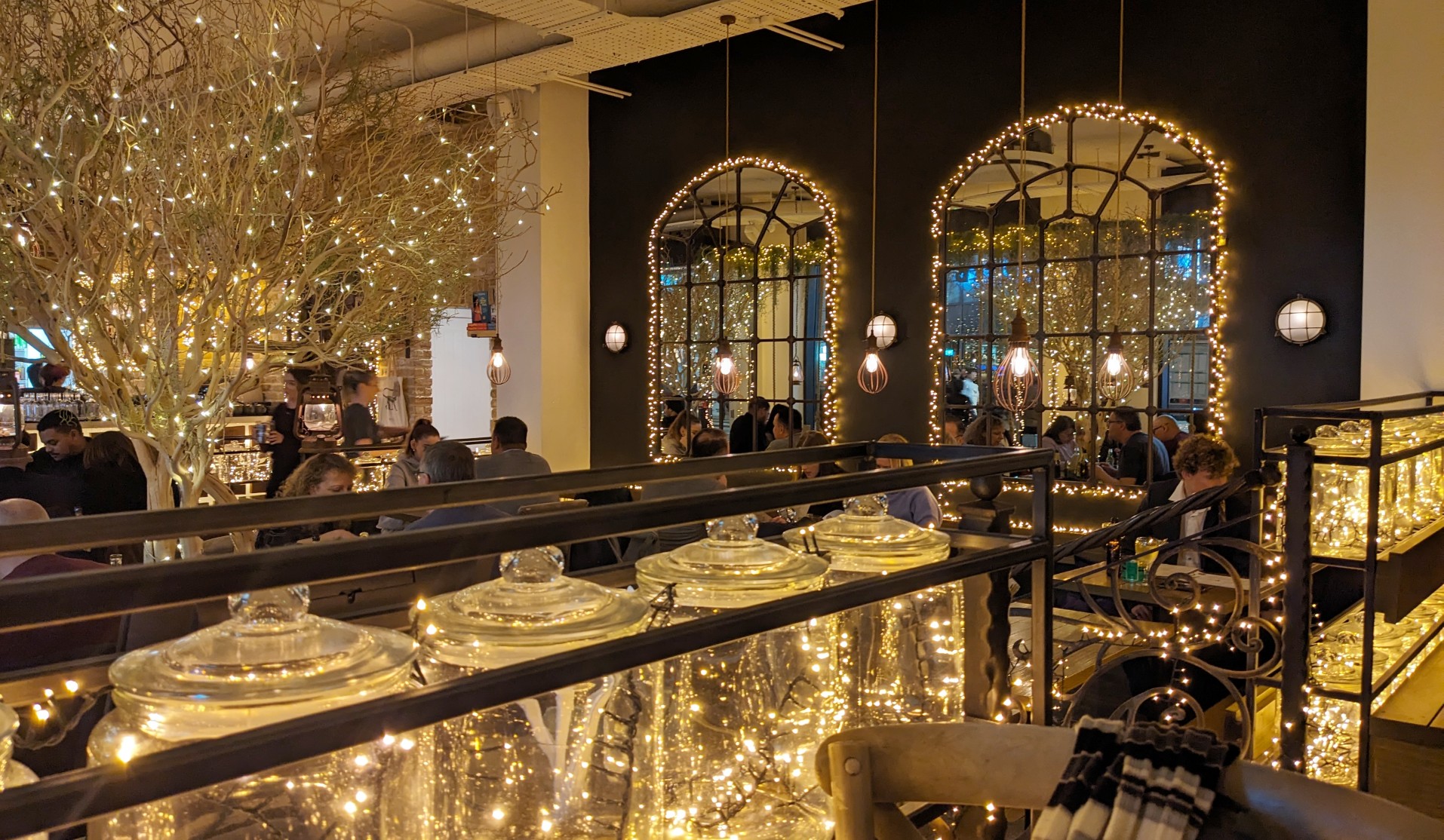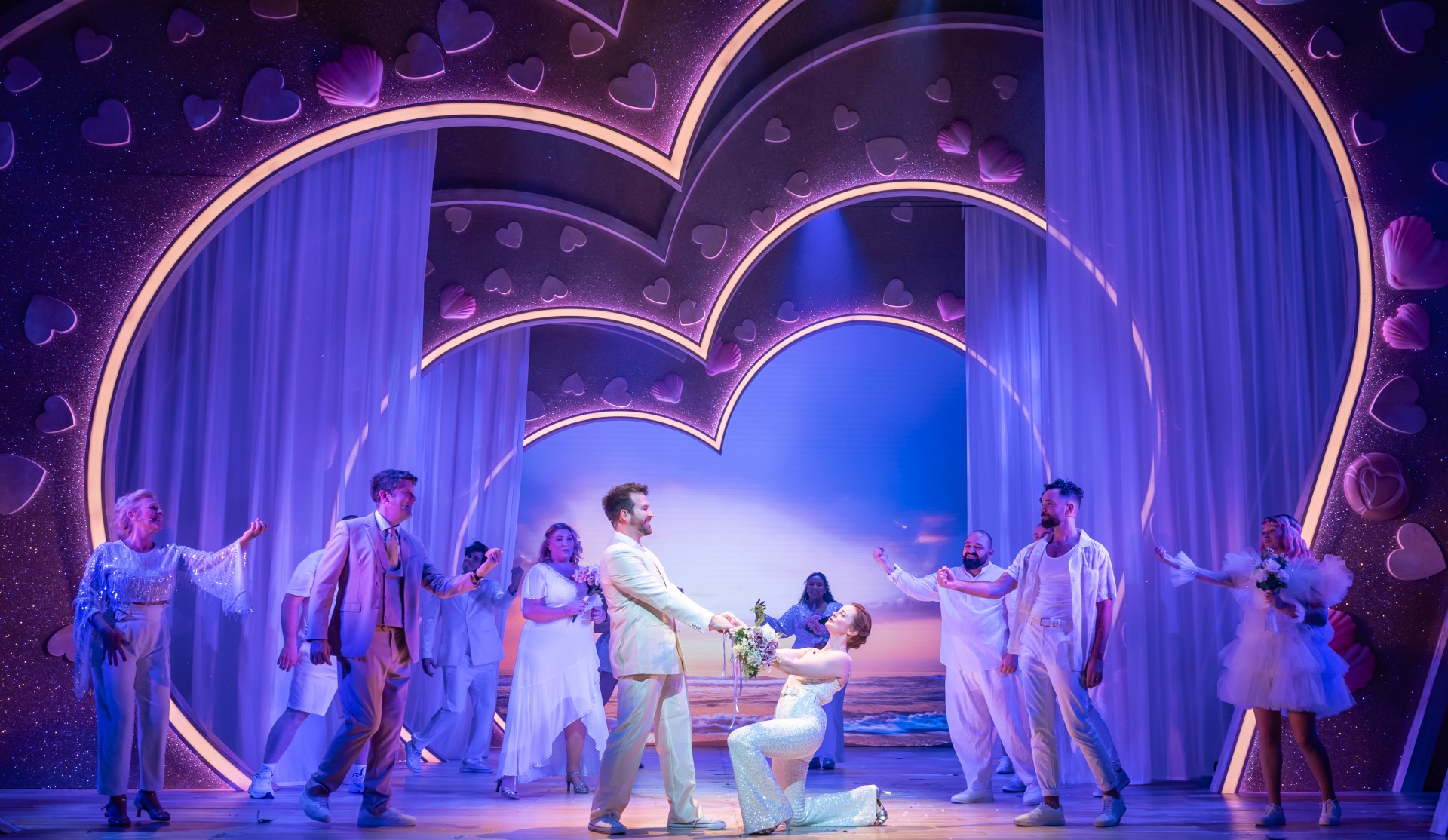The Thackray Museum of Medicine’s latest exhibition, Fragile Microbiomes, focuses upon BioArt. Artist Anna Dumitriu is a pioneer in the field.
Scientific and artistic methodologies are combined to form artworks that are often made through the manipulation of bacteria.
I have long been a fan of exhibitions that combine science and art. When on art trips to London, my first stop is often an exhibition at the Wellcome Collection, where the synthesis of science, history and art lead to fascinating insights. This new exhibition is clearly in that tradition. Moreover, by focussing upon BioArt, it pushes boundaries in both art and science.
Dumitriu’s work is not produced in isolation. She has worked in collaboration with laboratories and scientific institutes across the world, including the Eden Project, the Institute of Microbial Biotechnology in Vienna and the University of Cambridge. Dumitriu is director of The Institute of Unnecessary Research (IUR), a global hub for artists and researchers working experimentally with curiosity-driven research, which she founded in 2004.
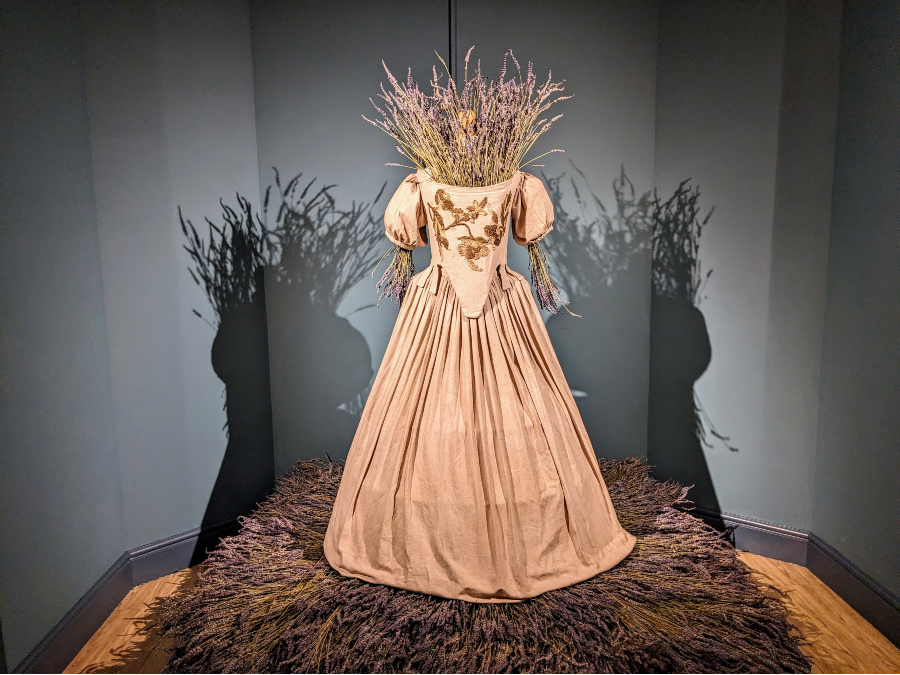
She has a long-standing connection to the University of Leeds, where she first learned about the Thackray. She was told the museum would be ‘right up her street’ and she agreed that it was. It was here that she first saw a Pneumothorax Machine, which was used to collapse the lungs of TB patients. A carved and engraved machine is one of the exhibits. Once thought of as an historic relic, we are reminded that TB is on the increase and that trials of pneumothorax treatments are once again taking place.
The exhibition contains three new works that have been developed in collaboration with microbiologist Dr Jane Freeman from Leeds University. Her work focuses upon the bacteria clostridioides difficile. When she told Dumitriu that the university team modelled the gut and the impact of the bacteria, the artist expected to see a computer programme. Instead she found a bubbling artificial ecosystem. This ‘gut model’ has been used as the basis of Disembodied Dysbiosis. The decorated,etched glass bottles show how antibiotics can deplete gut microbes, leading to an imbalance known as dysbiosis.
Above the installation The Fragile Microbiome is a series of hand-felted pieces that represent the gut lining and the bacteria communities it hosts. The felt is impregnated with bacteria DNA and coloured with bile pigments. The effect of antibiotics upon the helpful bacteria in our guts is central to both these artworks.
The gallery hosting the main exhibition is dramatically lit. This adds to the emphasis on small details of embroidery or carving that highlight biological processes. Many of the exhibitors reference clothing and accessories. Necklaces, dresses and a fan reference our bodies and their interaction with the bacterial world. The Plague Dress, utilising a 1665 style dress, represents historical practices in its use of walnut and lavender, and modern knowledge through its impregnation with DNA from dead plague bacteria.
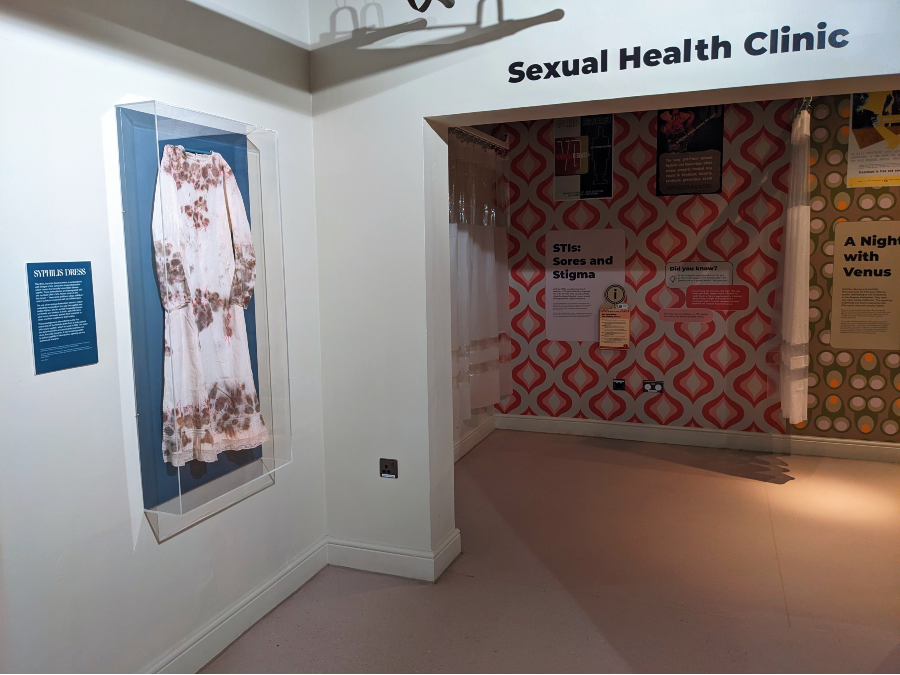
Dumitriu’s connection to the Thackray is shown through a number of artworks that are strategically placed in other parts of the museum. Syphilis Dress is situated outside the museum’s Sexual Health Clinic exhibit. The antique Edwardian dress is embroidered with corkscrew syphilis shapes and contains sterilised bacteria. In the museum’s Apothecary Shop you will find Hypersymbiotics Post Pandemic Edition; an old style apothecary box
with invented new products which raises questions about reliability in the world of pharmacology.
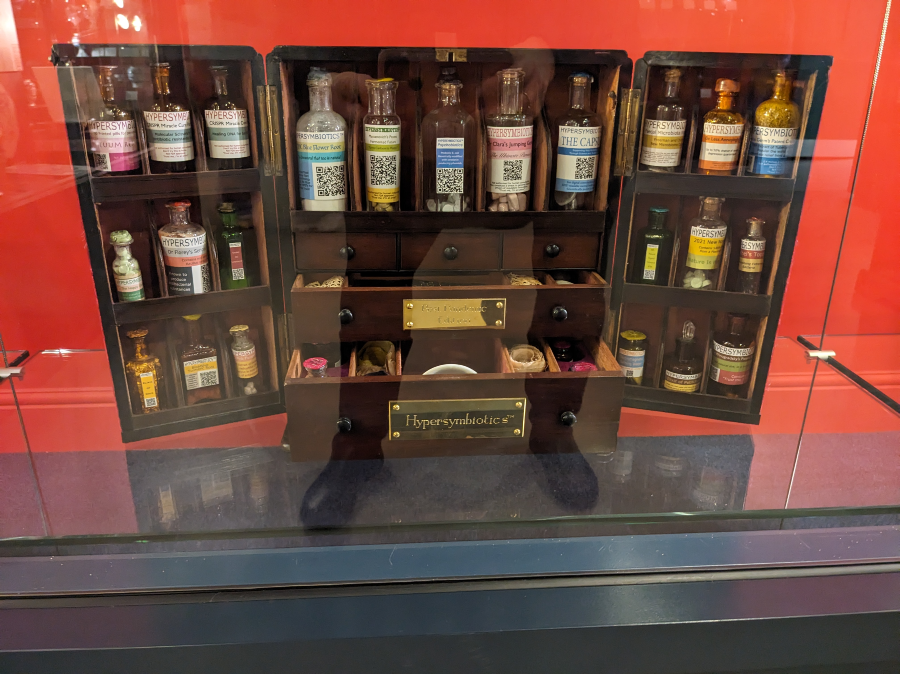
There are visually attractive artworks here but they belie important and scary issues. The collaboration between art and science presents difficult concepts in an approachable way. Dumitriu told me she has always been interested in science but was not engaged by the way it was taught at school. Freeman in her introduction to the exhibition said that lots of scientists have a creative side they ‘need to bring to work more often’. Together, they have presented an exhibition that helps demystify science and encourages us all to take the threat of over use of antibiotics seriously.
The Thackray was recognised with a Gold Award in the recently released Visitor Attraction Accolades for 2022–2023. The addition of an exhibition space during the museum’s refurbishment has undoubtedly added depth to the Thackray’s offering. Art and science do enhance each other.
The exhibition continues until 23 June 2024.
All photography by Debbie Rolls. Main image: Anna Dumitriou and Dr Jane Freeman.


